Mara and Cosau River Valleys
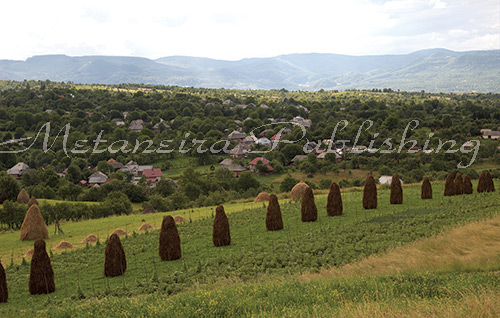
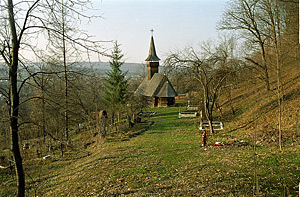
Mara
Although very picturesque and traditional, Mara village is not much visited by tourists, who pass through on their way to the other valleys of the region. It is the first village in the Mara River Valley after the road coming from Baia Mare clears the Gutâi Pass at a height of nearly 1,000 m.
Just outside the village, towards Baia Mare, there is a monumental gate, carved by the sculptor Traian Bilţiu Dăncuş, to symbolize the entry into the historical Land of Maramureş.
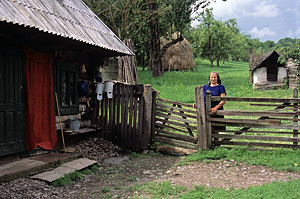
Deseşti
Deseşti commune is formed of the villages of Mara, Hărniceşti and Desesti. Among the many artisans of the village can be mentioned Vasile Pop Taina, a famous builder and restorer of wooden churches, and Maria Pop, a weaver with an impressive private collection of old carpets, bags, costumes, tablecloths, etc. and Deseşti with a total of about 2,500 nhabitants. The village of Deseşti is three km downriver from Mara towards Sighetu Marmaţiei.
Another tourist attraction in the village is the new Tourist Museum Complex Deseşti. As its name suggests, the place is a museum that offers accommodation to tourists.
The name of Deseşti is connected to the name of the modernist poet Nichita Stănescu who came here several times.
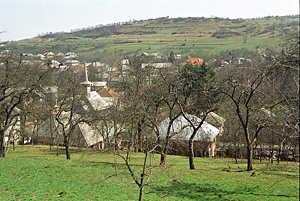
Călineşti
The commune of Călineşti with its 3,600 inhabitants has three villages: Corneşti, Călineşti and Văleni. Călineşti village is about four km upriver from Corneşti. The county road DJ 185 connects it also with Ocna Şugatag, and with Bârsana in the Iza River Valley, via Văleni.
The village is situated in a very beautiful landscape of green hills and meadows, but in the village itself there are not very many old traditional houses left anymore.
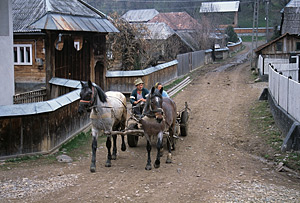
Corneşti
About three km up the valley of Cosău from Fereşti is the village of Corneşti, a small traditional settlement. It was mentioned for the first time already in 14th century documents.
Hărniceşti
Hărniceşti is another three km downriver from Deseşti. Again, many old wooden houses and other traditional constructions have been preserved.
A impressive construction in the village is the Iurca House, built in 1792, which used to belong to a nobleman from the nearby village of Călineşti.
Each year in spring in Hărniceşti, Sat Şugatag and Hoteni is held the traditional festival of Tânjaua de pe Mara.
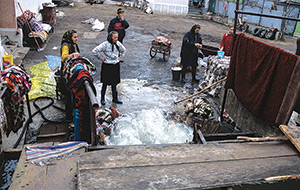
Fereşti
At the confluence of Mara and Cosău Rivers, there is the village of Fereşti. This is also where three roads fork: the main road DN 18, the county road DJ 109 F that leads to Ocna Şugatag, and a small local road that follows the valley of the Cosău.
Fereşti is a small village with traditional households, monumental wooden gates, living customs and the continued use of folk costumes.
Sat Şugatag
Sat Şugatag of 1,200 inhabitants is the next village in the Mara Valley, three km from Hărniceşti.
The village is famous for its furriers’ and leatherworkers’ workshops. Very skilled in this activity was Nicoară Hotea, well known for the beautiful sheepskin coats he made. Nicoară was also a staunch supporter of traditions, and he organized the famous popular spring ritual Tânjaua de pe Mara several times.
A yearly festival is the Hora din Şopru, attended by enthusiasts and groups of traditional folk dances.
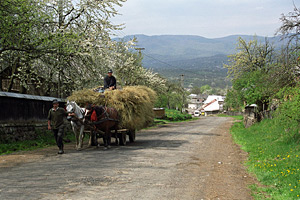
Mănăstirea
Mănăstirea is one of the smallest villages in Maramureş, one km from Sat Şugatag towards Sighet, at the end of a short side road. The village grew around the monastery of the nearby village of Giuleşti.
The miracle-working icon of the Virgin Mary of the monastery of Bixad in Satu Mare County most probably belonged to the monastery of Giuleşti.
Giuleşti
The commune of Giuleşti has about 3,800 inhabitants in four villages: Mănăstirea, Giuleşti, Berbeşti and Fereşti. Giuleşti village is 3 km from Sat Şugatag and 14 km from Sighetu Marmaţiei.
Berbeşti
Berbeşti is the last village in the valley of the Mara River, some four km both from Giuleşti and Vadu Izei, on the national road DN 18.
Berbeşti is the birthplace of Ion Bârlea, an important cultural figure of the 20th century.
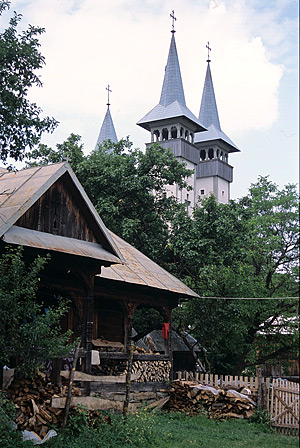
Sârbi
Sârbi is a real open-air museum with its impressive number of monumental carved gates, traditional wooden houses, annexes and tools, beautiful wooden churches, and people wearing the traditional dress.
One of the most important complexes of water-powered installations in Maramureş is here. Situated on the Cosău River, there are whirlpools, a sawmill, a flourmill, a fulling mill, an oil press, and a distillery.
Budeşti
Rather isolated at the very foot of the Gutâi Mountains, the village of Budeşti is striking with its hundreds of old houses arranged along narrow winding lanes, two very old wooden churches, numerous water-powered appliances, dozens of folk artisans, proud wearers of traditional costumes, vivid customs and songs, and strong beliefs in destiny and magic spells.
This is the place where tourists, but also folklorist, ethnographers, reporters, and makers of documentaries and films come: Budeşti is one of the most traditional villages of Maramureş.
Here there is the coat of mail of Pintea the Brave, a legendary outlaw of the 18th century. Many of the local legends tell about Pintea and his exploits against the Austrians.

 Vadu Izei Festival
Vadu Izei Festival Sapanta Merry Cemetery
Sapanta Merry Cemetery Mocanita
Mocanita Travel Romania
Travel Romania

